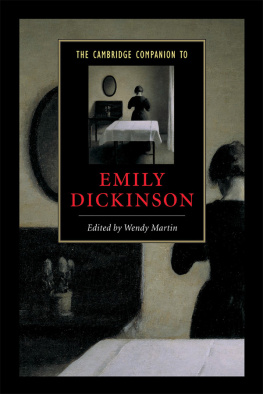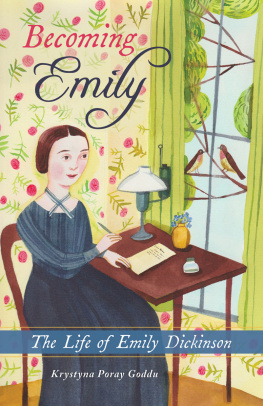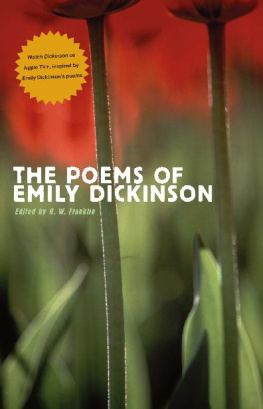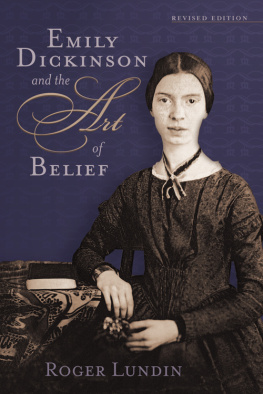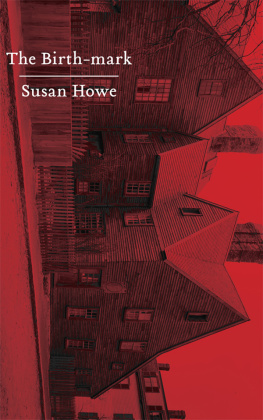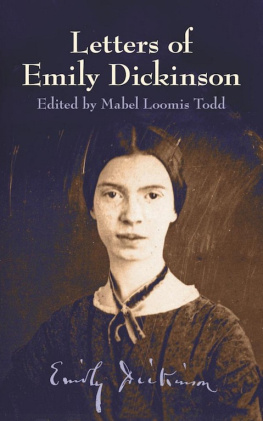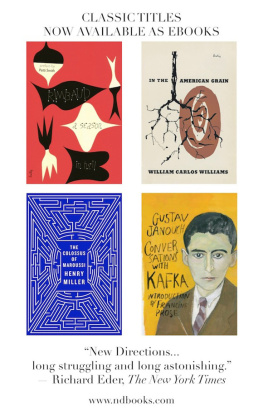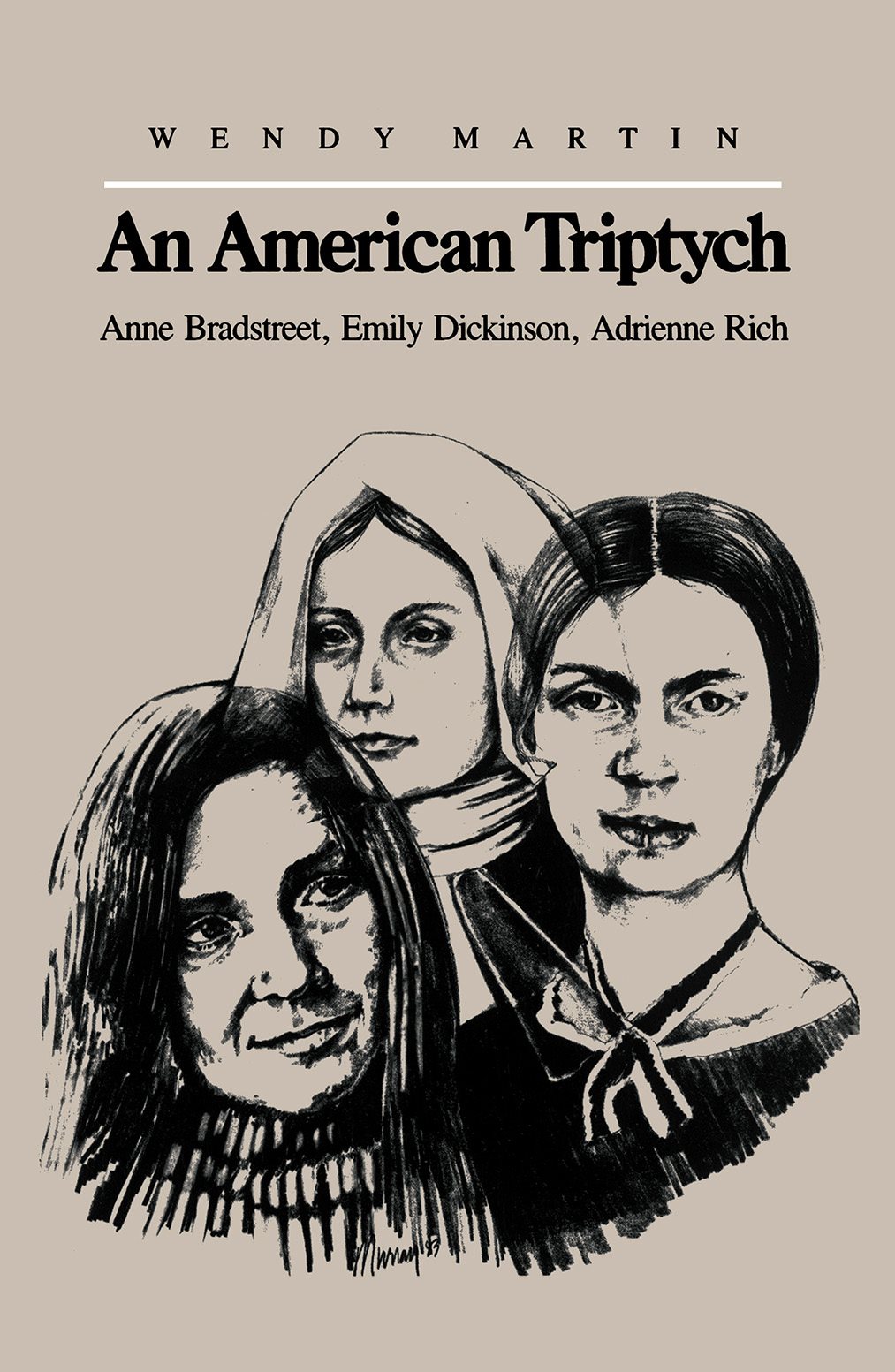
Contents
An American Triptych
1984 The University of North Carolina Press
All rights reserved
Manufactured in the United States of America
Set in Sabon by G & S Typesetters
Design by Naomi P. Slifkin
First printing, January 1984
Second printing, June 1984
Library of Congress Cataloging in Publication Data
Martin, Wendy.
An American triptych.
Includes bibliographical references and index.
1. American poetryWomen authorsHistory and criticism.
2. Feminism in literature.
3. Theology, Puritan, in literature.
4. Bradstreet, Anne, 1612?1672Criticism and interpretation.
5. Dickinson, Emily, 18301886Criticism and interpretation.
6. Rich, Adrienne Cecile, 1929 Criticism and interpretation.
I. Title.
PS310.F45M3 1983 811.0099287 83-6864
ISBN 0-8078-1573- X
ISBN 0-8078-4112-9 (pbk.)
THIS BOOK WAS DIGITALLY MANUFACTURED .
For my daughter, Laurel Martin-Harris, and my parents, Earl and Teresa Martin
Contents
Preface
In the 1960s, I was trained as a specialist in early American literature; at that time, I became convinced that Puritanism had had a dramatic influence on subsequent national, social, and political developments. But it was not until the 1970s, when I expanded the range of my scholarship to include American women writers from the seventeenth century to the present, that I recognized the interconnection between Puritan values and American feminist thought. In this book, I have explored the lives of three major American women writers whose work constitutes a female counter-poetic, and I have tried to demonstrate the continuing influence of early American thought on contemporary feminism. It is my hope that scholars and students of American literature, American culture, and feminist criticism will find this study valuable.
I would like to thank Doris Betts, Albert Gelpi, Sandra Gilbert, Alicia Ostriker, and Elaine Showalter, and my colleagues, Michael Kowal, Joseph McElroy, and Donald Stone, for their thoughtful readings of this book in manuscript form. Adrienne Rich has given me considerable help during the many years it took to write this book; in addition to permitting me to tape a lengthy conversation with her, she has sent me her poems in advance of publication, and I very much appreciate her support. I am very much indebted to Sacvan Bercovitch, whose incisive suggestions deepened my understanding of the religious and political tensions of Anne Bradstreets life and whose extraordinary scholarship has illuminated the currents of American thought.
The astute comments of Iris Tillman Hill and the expert editing of Sandra Eisdorfer helped me to pull the manuscript together in the final stages. I am grateful to them and to Nell Irvin Painter, who devoted long hours to proofreading galleys with me. During the two decades that I have been a student and scholar of American literature and culture, I have benefited from the insight and example of Brom Weber and Jim Woodress.
Finally, I would like to express my gratitude to Jed Harris, my husband, who has never known me when I was not working on this book.
While working full time, he has taken care of our daughter, Laurel, cleaned the house, cooked the meals, typed much of the manuscript, and provided editorial assistance. Without his insight, his patience, and his consistent encouragement, this book would not have been written.
Chapel Hill, North Carolina
January 1983
An American Triptych
Introduction
This is a book about three American poets who were women. As Americans, as women, as poets, they shared nationality, gender, an aesthetic tradition, but each expressed this experience in the context of her particular historical moment. Anne Bradstreet was the first woman poet in the New World; Emily Dickinson, in the nineteenth century, became a model for all women poets who followed, a model of eccentricity and isolation; Adrienne Rich, our contemporary, has consciously confronted not only the meaning of the American female poetic career but also the political responsibilities the woman poet owes her country, her sex, her time.
American literary scholarship has investigated the origins of our national traditions, and many studies have explored the connection between American literature and religion, but few have applied these concepts to women writers to discover how the American experience has been transformed and transfigured in their work. And none of these studies has concentrated on the evolution of female culture from Puritans to the present to determine how these American women poets have created an alternative vision grounded in the reality of their daily livesa reality that has been ignored or distorted by the prevailing ethos.
From the severe demands of Puritanism on Anne Bradstreet through the personalized Romanticism that simultaneously inspired and restricted Emily Dickinson to the private and public feminism that has liberated and challenged Adrienne Rich, these poets have created a female aestheticethic. Their poetry celebrates the life of this earth and demonstrates their commitment to nurturance rather than dominance. Their lives bear witness to their resistance to the fathers earthly and heavenly, and their work elaborates their vision of a loving community of women that forms the basis of a countertradition to the androcentric society in which they lived.
In the past decade, feminist criticism has been concerned with the special issues of the female imagination and the profession of the woman writer; several feminist studies have concentrated on British women writers or on novelists. Although there are many parallels in American and British experience, there were major differences, especially for those women who chose to write poetry. Emily Dickinson and Adrienne Rich both read Jane Eyre, but the world they inhabited was not Charlotte Bronts.
Anne Bradstreet, Emily Dickinson, and Adrienne Rich have spanned important phases in the development of American history and culture from Puritanism to transcendentalism to modern feminism. This study attempts to create a full portrait of each poet as she lived or is living in her own time; for, by placing these poets in a specific social and historical context, from colonial to romantic to contemporary American, it is possible to appreciate better their growth as artists and as individuals. In addition, it is necessary to understand the work of these poets as part of a web of American experience. Their personal and artistic conflicts and challenges are clarified by the understanding of the larger cultural context of their lives.
Bradstreet, Dickinson, and Rich lived most of their adult lives in the Northeastern United StatesBradstreet in Andover, Massachusetts; Dickinson in Amherst, Massachusetts; Rich in Boston, New York City, and most recently, Montague, Massachusetts. Anne Bradstreets family left the security of their familiar lives in England to encounter the unknown conditions of the vast wilderness of the New World. In addition to coping with the harsh and life-threatening conditions in the Massachusetts Bay Colony, Bradstreet had a demanding existence as the mother of eight children and wife of a Puritan governor. In spite of her burdensome domestic responsibilities in a relatively primitive environment, she managed to publish the first volume of poems written by a woman in the New World.
Bradstreet lived in a society that needed its cohesive religious ideals to survive the New World rigors. Faith in Gods providential plan sustained the errand into the wilderness and enabled the Puritans to endure the harsh conditions of New England. Bradstreets world was absoluteGod was at its center. As the sermons of John Cotton, John Winthrop, Cotton and Increase Mather, and Jonathan Edwards reveal, the Puritans thought of themselves as destined to carry out a divine mission. In spite of the eschatological framework that supported Bradstreets daily life, she sometimes questioned the validity of the Puritan voyage and doubted the existence of God. But she ultimately learned to control her agonizing skepticism by committing herself to the religious values of her culture.


